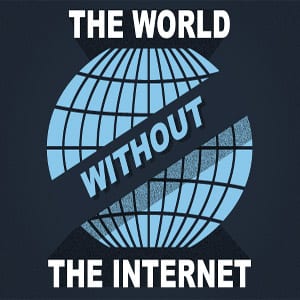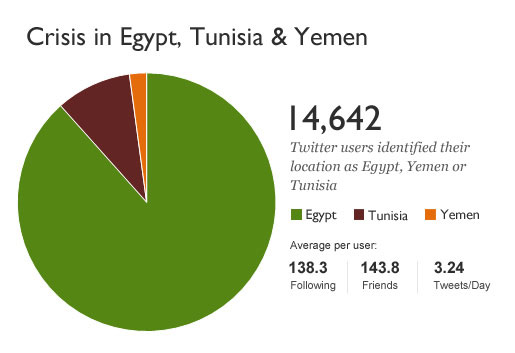[Part 2] Facebook EdgeRank and GraphRank Explained
In this [part 2] post, we attempt to further clarify Facebook EdgeRank and GraphRank; and more importantly, help you put that knowledge to work.
If you haven’t already read through Facebook EdgeRank and GraphRank Explained part 1, go back and read it now. After reading Facebook EdgeRank and GraphRank Explained part 1 you should know that Facebook uses an algorithm known as “EdgeRank.” This “scoring” system determines who and what appears on users’ news feed. The news feed is key to Facebook marketing — this is where you will gain viewership from prospective new customers.
However, before you can gain that viewership you have to have a clear understanding of Facebook EdgeRank and the rules that define it. This can make or break your social media marketing campaign. It is critical to understand three key elements: Affinity, Weight and Time Decay.
Facebook EdgeRank: Affinity explained
In part 1 OF Facebook EdgeRank and GraphRank Explained, you learned that Affinity relates to the proximity of the user’s relationship with the item’s creator. While that seems fairly simple to understand, it often gets misapplied. Many people forget that affinity only works one-way. This means that just because you have been visiting a long forgotten friend’s profile and you comment on a photo or comment that you will now start appearing on their news feed. However, if you comment on an item on their wall and they comment back then that would lead to them having a greater Affinity to you.
Facebook EdgeRank: Weight explained
Weight is a simple Facebook EdgeRank formula that decides what content is more likely to show up in the news feed than other content. Although there is no real definitive pattern to Weight, there are definitely certain items that carry a higher ranking within Facebook EdgeRank Weight.
Within Facebook EdgeRank Weight, items that rate the highest are videos, photos and links. Therefore, in order to use weight to benefit your business, you have to rethink how you are communicating using Facebook. If you want to reach as many new customers as possible then you should try to include such items in your posts.
It is also important to realize that not everyone of your friend’s Weight ranking is the same. The person who enjoys clicking on links is probably going to see your link posts more often then the person who prefers pictures. Similarly, the person who likes pictures is going to see your pictures more often then the person who likes links. This information should encourage you to vary your posts.
Facebook EdgeRank: Time Decay explained
The last piece of the Facebook EdgeRank puzzle is Time Delay. Simply stated, a newer item is more likely to appear than an older item. Unlike Twitter, which is controlled by only chronological order, Facebook EdgeRank also takes into account Affinity and Weight.
With this in mind it is important to consider the timing of your posts. One thought is to create posts during the times your audience will most likely be using Facebook thus decreasing the Time Decay and increasing the probability of it showing up on their news feed. In other words, posting when other people are less likely to be posting content reduces the competition and forces yourself into a spot on their news feed.
Additional things you can do to increase your EdgeRank
Constant interaction is key to driving your Facebook marketing campaign. Plan for important announcements. Start increasing your Facebook EdgeRank Affinity now. If you know you will be making a big announcement, maybe you invite conversation and input from friends or you ask for feedback on a picture. The comments you receive will increase your chances of appearing on their news feed and therefore your overall Facebook EdgeRank score will increase.
Research shows that using keywords like Why, When, Where, and Would greatly increases the likelihood of comments and likes which raises your Facebook EdgeRank Weight value.
Post frequently and use Time Decay to your benefit by determining when your friends are using Facebook. Also factoring in when you get the most interaction from your friends. Pay attention to when there seems to be lulls in status updates and post at those times to ensure a spot in the news feed.
Consider the content in your status updates and how others perceive them. People are drawn to things that are interesting, relatable, honest, and that appeal to their emotion. So before you hit enter and post your status update ask yourself, “is this interesting? Can others relate to me? Am I being honest? Is there any emotional appeal?” All of these will help you create content that will increase your interaction with your friends and help with Facebook EdgeRank.
The Additional Element of Facebook GraphRank
As previously noted in Part 1, GraphRank mainly targets those who develop Facebook apps. Like Facebook EdgeRank, the more a friend uses an app the higher the GraphRank. While Facebook EdgeRank focuses more on the interactions with comments and likes, GraphRank interaction comes with using the app. More importantly, they have to hear about it often and see their friends using it.
Many of the suggestions for increasing your Facebook EdgeRank also apply to GraphRank; however, this is where Time Decay can really come into play. Note when your friends are online and interacting with you and share at those times in order to appear on their news feed. Also be aware of lulls in activity and post at those times so that when they turn on Facebook your app post will appear in their news feed.
Return to top: [Part 2] Facebook EdgeRank and GraphRank Explained
Share your thoughts about Facebook EdgeRank or if you have some general comments post them below.


![[Part 2] Facebook EdgeRank and GraphRank Explained](http://blog.involver.com/wp-content/uploads/2011/12/Part-2-Facebook-EdgeRank-and-GraphRank-Explained-102.jpg)




